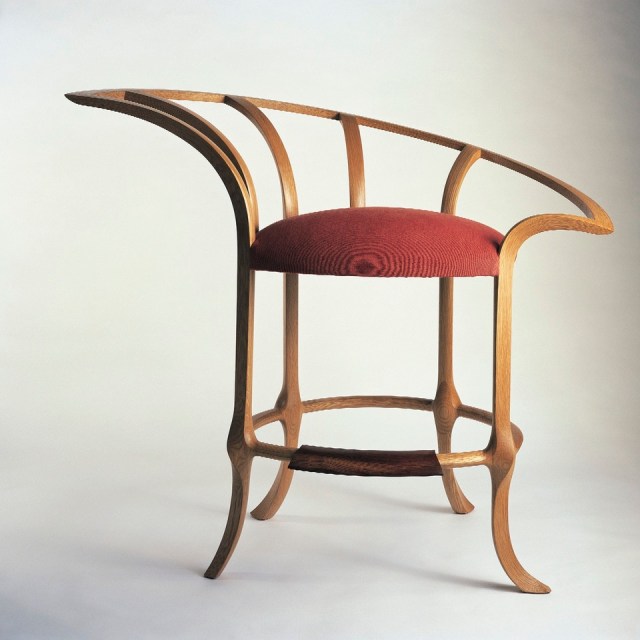
One of the furniture forms I’ve had a long obsession with are settles. These high-back benches were common in early homes and were handy for keeping warm by the fire. One of their variants, the settle chair – is somewhat less common. But it is just as delightful.
These boarded chairs are made from four planks that are nailed or screwed together. And – if you take what you know about stick chairs and apply it to a boarded chair, it can be pretty comfortable. Much more comfortable than the crate or coffin that it resembles.
The trick is to angle almost every joint so the backrest leans back, the chair leans back and the giant boarded sides open up to the sitter like the arms of a mustachioed aunt with boundary issues.
There are 100 ways to build this chair that are difficult. For the last several months, I’ve been tinkering with the construction process to make it as simple and foolproof as possible. Finally, on Friday I decided that drawings and CAD could take me no further. I had to build it.
This chair will be the next new chapter for “The Anarchist’s Design Book” expansion. If you have questions about the expansion, here is an FAQ.
I started with No. 2 common white pine 2x6s from the home center and glued them up into four panels:
1 Seat: 1-1/4” x 26” x 19”
1 Back 1-1/4” x 21-1/2” x 41”
2 Sides 1-1/4” x 19 x 49”
It’s a lot of wood, I know. But 2x6s are cheap. I also knew I was going to cut the side pieces with a decorative pattern, but I wasn’t sure what the pattern would be. Had I known the pattern, I would have glued up the sides in a way that greatly reduced waste.
I could bore you with all the mental gymnastics that came up with the steps to build this chair. If you come up with an easier way to do it with simple tools, I applaud you.
Let’s hit the highlights.

Cut the dados in the side pieces that will hold the seat. These dados are angled 97° off the back, which creates part of the “lean” to the back. The dados are 1/2” deep and start 15” up from the bottom of the side pieces.

Cut or plane a 9° bevel on the back edge of the side pieces. This bevel makes the sides open toward the sitter (remember the aunt joke?).

Screw the back to the sides with No. 9 x 3-1/8” screws. No glue. You will want to disassemble the chair to make things pretty. You can glue it up later if you like.

Glue 5”-wide blocks to the back edge of the sides, creating the back feet. You’ll have to cut the 9° bevel on one long edge of these blocks. Note that I’ve already cut an angle on the bottom of the sides to add some more lean. I recommend you do this at the end of the construction process.

Make the seat fit its hole. Here I’m using pinch sticks to get the measurement of the seat at its narrowest point. Cut the seat to size and fit it in the dados. Screw the sides to the seat.

Cut the decorative profile on the sides. I drew mine with trammel points. The three arcs for the top curves are all a 9-5/8” radius. The curve for the bottom is a 7-1/2” radius. I was trying to imitate the traditional wingback chair with these curves and exaggerated things to make it look more “ersatz hillbilly.”

Clean up the edges. Screw it back together and then see if you like it.
I’ll build a couple more of these chairs with different profiles and then get to work on writing the chapter for the book. This prototype is good enough to get cleaned up and finished. I’ve asked my daughter Katy to paint it – perhaps we’ll offer it for sale here if we’re both satisfied with it.
— Christopher Schwarz
Like this:
Like Loading...

 Also, like all our digital products, we offer it without DRM (digital rights management). So you can easily integrate it into your personal library without passwords or having to be connected to the internet when you read it.
Also, like all our digital products, we offer it without DRM (digital rights management). So you can easily integrate it into your personal library without passwords or having to be connected to the internet when you read it.
















